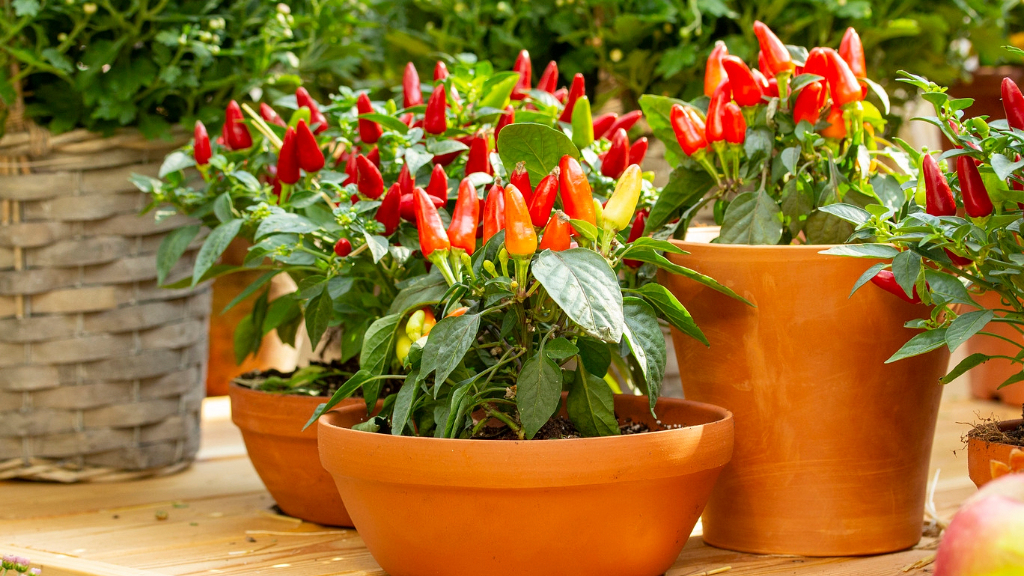Surprising Results With Container Peppers


For many years, I had never given much thought to vegetable gardening in containers. After all, I'm lucky enough to have plenty of in-ground gardening space. Yet, as any experienced gardener knows, Mother Nature can be one fickle lady. I guess you could say she pretty much forced me into giving container-gardening a try.
This happened one year when a cold, rainy spring left my garden soil too wet to rototill. Day by day, I watched my vegetable seedlings struggle to exist in their starter pods. Should I attempt to plant them in the saturated soil and hope for the best? Or should I hold off planting and gamble that a dry spell was on its way?
Pot Them Up
That's when a friend suggested container gardening. I have to admit, I had my doubts. I wondered whether the pots would hold sufficient nutrients for setting blooms and forming fruit, or if the planters would dry out too quickly on hot, sunny days? Yet, knowing it was my best chance for success that year, I decided to give it a try.
Much to my surprise, the bell pepper plants outshined the other container veggies. I was shocked by the sheer number of peppers these potted plants produced. Little did I know that pepper plants were this adaptive to container-growing. In fact, peppers grown in pots have several advantages over those grown in the ground:
- Soil temperature - With a soil temperature preference of 65 degrees F. (18 C.), peppers planted in the cool spring ground can take longer to become established than those in sun-warmed pots.
- Season extension - Due to their mobility, container-grown peppers can be transplanted earlier in the spring and held longer in fall by simply moving the pots inside during frost advisories.
- Wind protection - As pepper plants become laden with fruit, their brittle stems are prone to breakage in windy weather. This can reduce overall yields. Yet, potted pepper plants can be easily moved to a more sheltered area during windstorms.
- Accessibility - Potted peppers are often grown closer to the house, which makes them more convenient to grab when preparing meals or snacks.
Potted Peppers Come Early
Due to the benefits of growing peppers in pots, this practice has become a regular addition to my in-ground garden. I start these seedlings a few weeks earlier than the rest of my peppers and I transplant them into their permanent containers well ahead of our last spring frost date. And my reward for the extra work this entails?
I have mature peppers weeks ahead of what is normal for our area. Plus, I can harvest much later in the fall. This not only increases my annual pepper yields, but it reduces the number of months I must rely on store-bought fresh peppers. I'm just not sure if I outwitted Mother Nature that year or if she had the last laugh.
Gardening tips, videos, info and more delivered right to your inbox!
Sign up for the Gardening Know How newsletter today and receive a free copy of our e-book "How to Grow Delicious Tomatoes".

Laura Miller has been gardening all her life. Holding a degree in Biology, Nutrition, and Agriculture, Laura's area of expertise is vegetables, herbs, and all things edible. She lives in Ohio.
-
 Grow ‘Karl Rosenfield’ Peony Plants For The Ultimate Frilly Border Beauties And Cut Flowers
Grow ‘Karl Rosenfield’ Peony Plants For The Ultimate Frilly Border Beauties And Cut FlowersFor frilly double magenta peony petals infused with a heady fragrance, grow ‘Karl Rosenfield’ peony plants. Here’s how to cultivate the ultimate plushy blooms
By Tonya Barnett
-
 10 Common Composting Problems That Can Spoil Your Garden Gold – Plus Easy Fixes
10 Common Composting Problems That Can Spoil Your Garden Gold – Plus Easy FixesLearn how to troubleshoot common composting issues before they ruin your stash – from bad smells and bugs to materials not breaking down as they should.
By Susan Albert